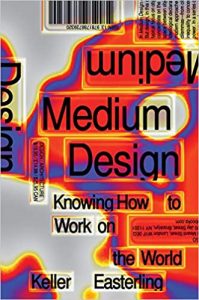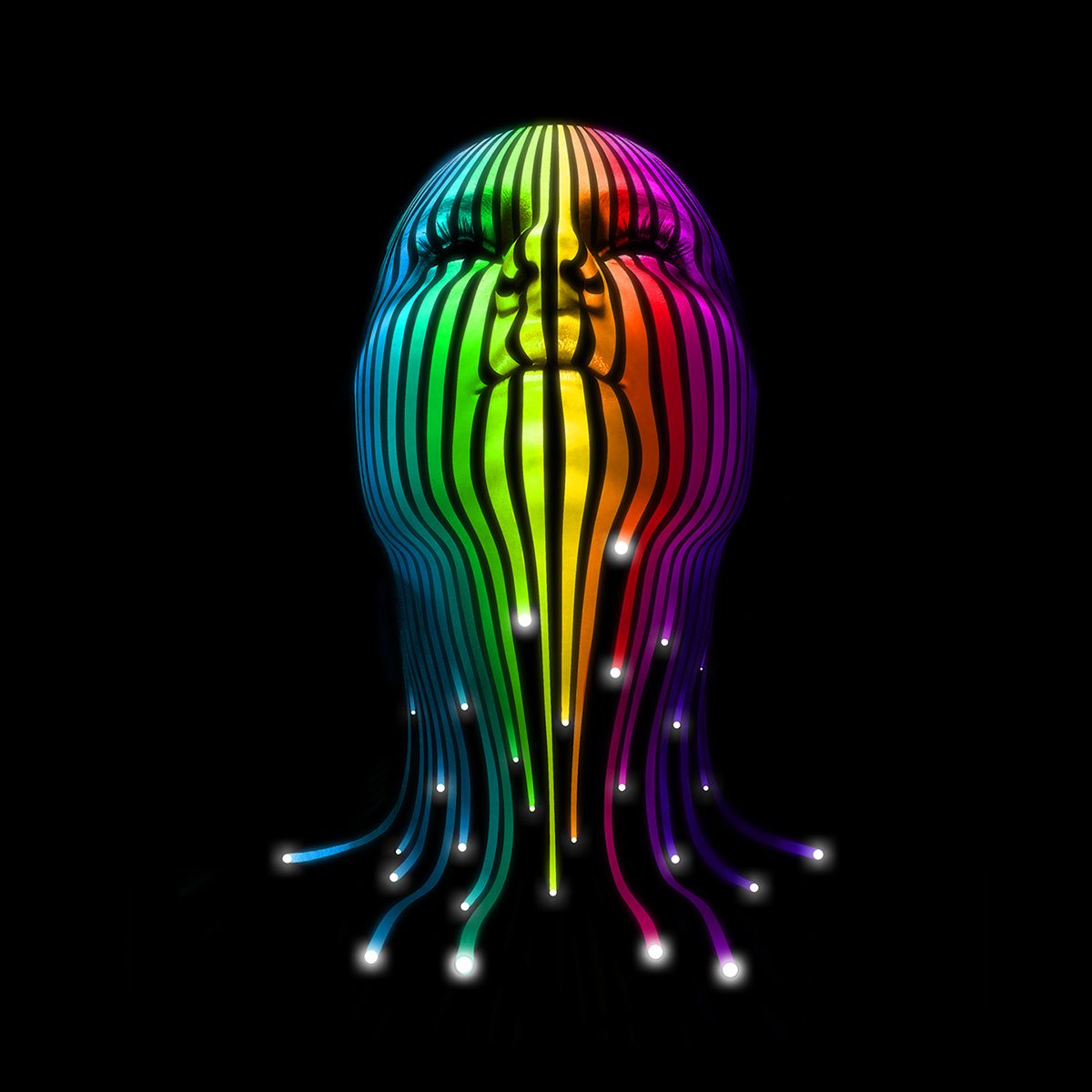Those series are still draft essays in progress …
Medium design is a design extended to big physical and virtual spaces. While not dominant, this habit of mind is ever-present in many disciplines and leads to readings that include Michel Foucault, Giorgio Agamben, Gilles Deleuze, Jacques Rancière, and Walter Benjamin.
Medium design sounds strange and funny for the usual language, even though each of the terms is clear and well known by everybody. It is the association of those two words, which seems confusing. Let’s see why this association “Medium design” poses a problem. Therefore, defining each of the terms and is general utilization is not superfluous.
Medium is an agency or means of doing something.
“The intervening substance through which sensory impressions are conveyed or physical forces are transmitted”. It is the second meaning and the following example that makes it very clear: “radio communication needs no physical medium between the two stations”. This example shows that medium can be physical as well as virtual.
A Design is a drawing that someone produces to show how they would like something to be built or made and Design is the process and art of planning and making detailed drawings of something. This term is normally used for the construction of buildings but designers might also design the medium in which those buildings are suspended, from which comes the term: medium design. Medium in this context refers to Medius, middle, or milieu. Considering the field instead of the object, medium design inverts some dominant cultural logic and applique the proçes of design in a large scale of space than simple building or object.
Now it is clear that the association of two terms is a source of incomprehension because there was a time where the field was the result of chaotic buildings not designed in an ensemble. Medium design is a design extended to big physical and virtual spaces. “Medium is assessed for latent properties that unfold over time and territory, propensities within a context, potentials in relative position, or the agency in arrangement, and like an operating system or a growth medium, it decides what will live or die.” In this meaning: “Medium design does not eliminate, but rather multiplies, problems. Problems have potent potentials that leaven and catalyze each other in interplay.”
Keller Easterling said:” Benefiting from an artistic curiosity about reagents and spatial mixtures or spatial wiring, the Medium Design suggests different organs of design or different ways to register the design imagination. Beyond buildings, master plans, declarations, laws, or standards, it deploys multipliers, switches, or time-released organs of interplay like bargains, chain reactions, ratchets. While not dominant, this habit of mind is ever-present in many disciplines and leads to readings that include Michel Foucault, Giorgio Agamben, Gilles Deleuze, Jacques Rancière, and Walter Benjamin. “
Gilbert Ryle, The Concept of Mind (Chicago: University of Chicago Press, 1949), “Knowing How and Knowing That” 25-61.
Medium Design, Keller Easterling, Verso, MSRP: $20
_____

Book description – what is the relationship between the housing crisis – the demand for building more, and the credit crunch – when the markets crashed as a result of overheated speculation in housing? Why does building more roads only lead to more traffic jams? Why are there so many ‘free economic zone’ in countries with authoritarian leaders? These questions are at the heart of Keller Eastering’s provocative Medium Design. It is a call to look at the world in a different way, and as a result to rethink the way we design it, politically and architecturally. Currently, innovation is expressed in one key the rational explanation of the design and its problem-solving capacities in the mode of start-up clichés like elevator pitches and TED talks. . We are very good at looking at individual objects – buildings, commodities, ideas, but we are very poor at seeing how they connect and interact. We go in search of the right answer, and fail to see the array of potential outcomes. We are stuck in patterns of thought such as binaries or loops, which are often avoidable forms of violence. We mistake power for freedom; new for smart. In this book, Easterling proposes a new process: we need to look at the world in a different way in order to redesign it. We need to look not at the design object by itself but in its relations with the things around it. This is the potential power of design is in the interplay and disposition of the objects and ideas. We should place an emphasis on ‘knowing how’ above ‘knowing that, in order to liberate, challenge existing power and rebuild a more reflexive future.
Résume encore en brullon…
Le Medium Design (le design de médium) est un design étendu aux grands espaces physiques et virtuels. “Le médium est apprécié pour les propriétés latentes qui se déploient dans le temps et sur le territoire, les tendances dans un contexte, les potentiels en position relative, ou l’agence dans l’arrangement, et comme un système d’exploitation ou un médium de croissance, il décide de ce qui va vivre ou mourir.”
Dans ce sens :”Medium Design n’élimine pas, mais multiplie plutôt les problèmes. Les problèmes ont des potentiels puissants qui se lèvent et se catalysent mutuellement en interaction.”
“Bénéficiant d’une curiosité artistique pour les réactifs et les mélanges spatiaux ou le câblage spatial, le Le Medium Design suggère différents organes de conception ou différentes manières d’enregistrer l’imagination de conception. Au-delà des constructions, des plans directeurs, des déclarations, des lois ou des normes, il déploie des multiplicateurs, des interrupteurs, ou des organes d’interaction à durée déterminée comme les aubaines, les réactions en chaîne, les cliquets. Sans être dominante, cette habitude d’esprit est omniprésente dans de nombreuses disciplines et conduit à des lectures qui incluent Michel Foucault, Giorgio Agamben, Gilles Deleuze, Jacques Rancière et Walter Benjamin.” Keller Easterling



 Portrait of a woman on black background illustration of Medium Design
Portrait of a woman on black background illustration of Medium Design